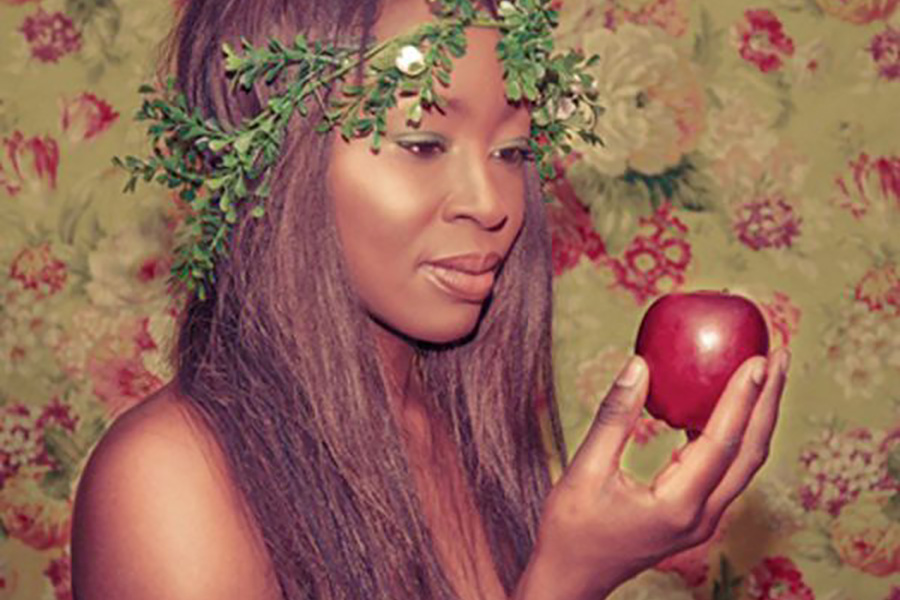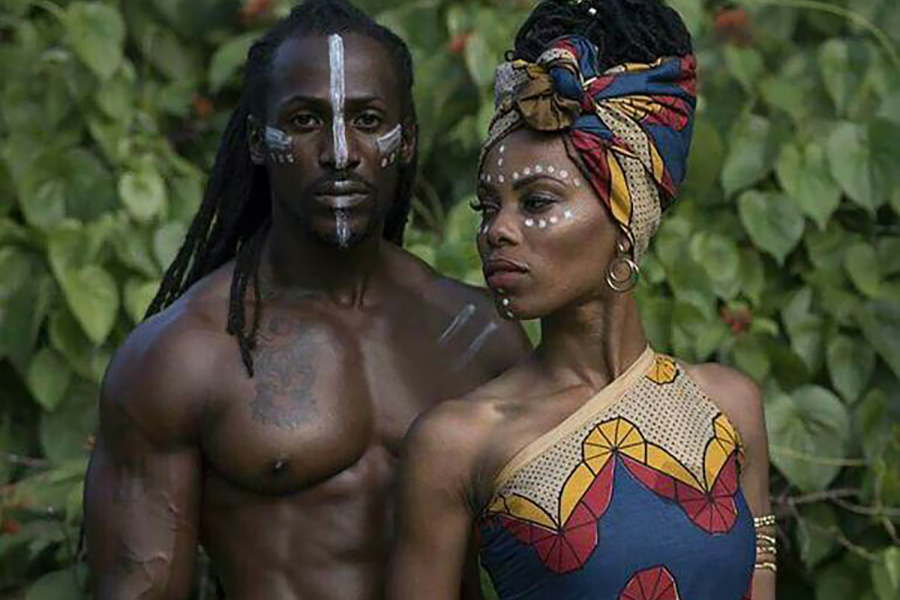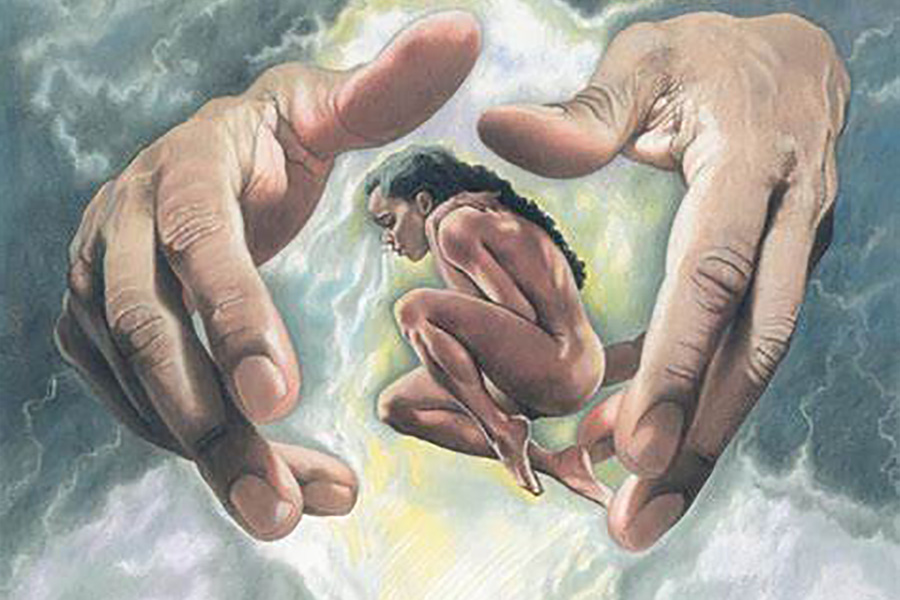The word khauah (𐤇𐤅𐤄) or “Eve” is is the first 𐤀𐤔𐤄 (ashah) and life-giver. She is the 𐤀𐤔𐤄 (ashah) of 𐤀𐤃𐤌 (Adam) and the mother of all 𐤀𐤃𐤌𐤉𐤌 (adamayam). Her name has also been written as Chavah, Chavvah, Chawah, Hauah, Havah, Havvah, and Hawah. However, this is a contested name of the first mother as her name could have originally been 𐤇𐤉𐤄 (Khayah).
The Paleo-Hebrew language or the original language of the Ābarayam is one spoken with an emphasis on the rauakh (breath, wind, spirit). With the language of the Ābarayam, each letter has a meaning and a number associated with it that adds meaning to each word they’re used with. Below you will be able to learn more about the letter in Ancient Hebrew, Yiddish Hebrew, Greek, and much more.
Letter Meanings
| Letter | Meaning |
|---|---|
| 𐤇 (kh) – kha | Tent wall, fence, separation, divide |
| 𐤅 (u) – ua [ýa] | Nail, tent peg, hook, to secure, connect, Messiah |
| 𐤄 (h) – ha | look, behold, the, reveal, breath, life, man Sufix: to, toward, in the direction of, -ward, her, feminine form, it |
| Ābarayat Number | |
| Hebrew Gematria | |
| English Gematria | |
| Simple Gematria |
Based on the meaning of the letters the word could be defined as:
- “fence (protection) to secure breath (life)”
- “separation of Messiah of man”
- “fence (protection) to secure man”
- Combines Kha and Uah
Definitions for 𐤇𐤅𐤄 / khauah
| Language | Word | Transliteration | Pronunciation | Definition |
|---|---|---|---|---|
| Ābarayat | 𐤇𐤅𐤄 | khauah | kha-oo-ah | to tell, declare, show |
| English | Eve | Eve | eev | Eve is a figure in the Book of Genesis in the Hebrew Bible and the Quran. |
| Hebrew | חַוָּה | Chavvah | khav-vaw’ | to tell, declare |
| Arabic | حَوَّاء | Hawwa | haw-wa | Eve, the first woman, wife of Adam. |
| Greek | Εὔα | Heua | yoo'-ah | Eve, the first woman; wife of first man Adam. |
In The Beginning
According to the second chapter of 𐤁𐤓𐤀𐤔𐤉𐤕 (BaRaashayat), she was created by 𐤉𐤄𐤅𐤄 (Yahauah) / 𐤉𐤄𐤉𐤄 (Yahayah) by taking her from the 𐤑𐤋𐤏 (tsalaā) of 𐤀𐤃𐤌 (Adam), to be 𐤀𐤃𐤌 (Adam)’s companion. 𐤀𐤃𐤌 (Adam) is charged with guarding and keeping the garden before her creation; she is not present when The Most High commands 𐤀𐤃𐤌 (Adam) not to eat the forbidden fruit – although it is clear that she was aware of the command.
She decides to eat the forbidden fruit from the 𐤏𐤑 (āts) 𐤃𐤏𐤕 (daāt) 𐤈𐤅𐤁 (thauab) 𐤓𐤏 (raā) after she hears the 𐤍𐤇𐤔 (nakhash)’s argument that it would not kill her but bring her benefits. She shares the fruit with 𐤀𐤃𐤌 (Adam), and before they can eat of the 𐤏𐤑 (āts) 𐤇𐤊 (chak), they are expelled from the 𐤂𐤍 (gan) 𐤏𐤃𐤍 (ādan).
The Second Wife?
The scriptures of 𐤁𐤓𐤀𐤔𐤉𐤕 (BaRaashayat) contain two accounts of 𐤀𐤃𐤌 (adam) creation. The first account version appears in Genesis 1:26-27. Here, the 𐤀𐤋𐤄𐤉𐤌 (alahayam) fashion man and woman simultaneously when the text reads: “So 𐤀𐤋𐤄𐤉𐤌 (alahayam) created 𐤀𐤃𐤌 (adam) in the divine image, male and female, 𐤀𐤋𐤄𐤉𐤌 (alahayam) created them.” However, the second account is the one referenced above.
Ancient Rabbis, specifically the Babylonian Talmud (Babalay Talamauad), took this to mean that 𐤀𐤃𐤌 (adam) had a first wife, who they decided to call 𐤋𐤉𐤋𐤉𐤕 (Layalayat). They say that 𐤀𐤃𐤌 (Adam) was displeased with her, so the Most High replaced her with the mother of all humans. Nonetheless, this theory is easily debunked since in the scriptures where the 𐤑𐤋𐤏 (tsalaā) was taken out the whole purpose of the creation was because 𐤀𐤃𐤌 (Adam) had no companion, not that he no longer had a companion but that he had no companion like the other creatures on the land.
Also, 𐤋𐤉𐤋𐤉𐤕 (Layalayat) is never mentioned in the first five books of the scriptures but is mentioned in the Book of 𐤉𐤔𐤏𐤉𐤄 (Yashaāyah), which is considered to be in 8th century BCE. 𐤋𐤉𐤋𐤉𐤕 (Layalayat) most likely comes from the Lilu and Lilitu from the Akkadian body of works.
Images for 𐤇𐤅𐤄 / khauah




Alternative Spellings
Due to possible mistranslations of the word an alternative spelling of the word is:
Definitions for /
When adding the 𐤉 (yad) to the end of a word, it creates a possessive of the original word. It can either signify “my…” or identify a member of a nation. For example, 𐤏𐤁𐤓 (Ābar) is the progenitor, but 𐤏𐤁𐤓𐤉 (Ābaray) is the singular descendant of him also known as a Hebrew.
| Language | Word | Transliteration | Pronunciation | Definition |
|---|---|---|---|---|
| Ābarayat | ||||
| English | ||||
| Hebrew | ||||
| Arabic | ||||
| Greek |
Images for /


Definitions for /
When adding the 𐤌 (mayam) after the 𐤉 (yad) to the end of a word, it creates a plural of the original word. It can identify multiple members of a nation. For example, 𐤏𐤁𐤓 (Ābar) is the progenitor, but 𐤏𐤁𐤓𐤉𐤌 (Ābarayam) are the plural descendants of him also known as Hebrews.
| Language | Word | Transliteration | Pronunciation | Definition |
|---|---|---|---|---|
| Ābarayat | ||||
| English | ||||
| Hebrew | ||||
| Arabic | ||||
| Greek |
Images for /


Definitions for /
When adding the 𐤕 (tau) after the 𐤉 (yad) to the end of a word, it creates a plural of the original word. It identifies the language or a sign of a nation’s existence. For example, 𐤏𐤁𐤓 (Ābar) is the progenitor, but 𐤏𐤁𐤓𐤉𐤕 (Ābarayat) is the language of him also known as Paleo-Hebrew language.
| Language | Word | Transliteration | Pronunciation | Definition |
|---|---|---|---|---|
| Ābarayat | ||||
| English | ||||
| Hebrew | ||||
| Arabic | ||||
| Greek |
Images for /


Classification
You can continue your studies of the words by viewing Strong’s entries for:



